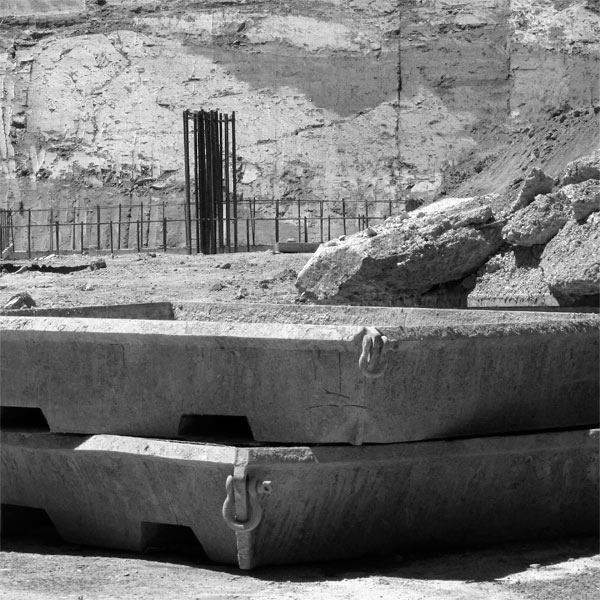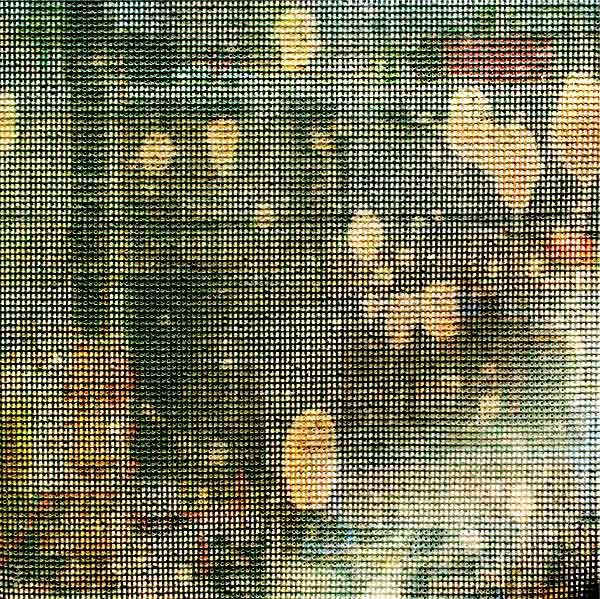
I photographed my first construction site over 30 years ago. At least three men with bullhorns shouted at me as I walked a long gangplank into the center of an open pit the size of a city block. I could not resist the bright red ladders, the spiking rebar and randomly thrown coils of wire, the orange triangles and cones and wooden spools, the augurs and blades – all massed against a landscape of mud brown and gray. The scene spoke of the chaos phase of creativity, when shape and sense are only dimly glimpsed, and anything is possible. Not to mention that it was BIG. A few months later the newspaper carried a piece about a woman in an evening dress with a cast on her arm who was found, drunk and asleep on a beam in the unfinished 6th story. It occurred to me then that not for nothing do they measure skyscrapers in “stories.”
My fascination with monumental structure, excavation, history, surface and the ambiguous terrain between ruin and renewal has continued as our world has moved into a phase of urban development in hyperdrive. You can visit any city in the world and see the unmistakeable filigree of orange cranes rising above the skyline. The new landscape incorporates an ever-changing theater of half-walls, scaffolds, massive draperies and open pits girded by barriers as interesting as what is behind them.
The photographs here reflect the influence of the theory of wabi-sabi: nothing lasts, nothing is finished and nothing is perfect. And within this recognition lies a very particular kind of beauty. Purely documentary photographs form the basis for much of my work in the series Construction/Reconstruction although I often obscure or alter them beyond recognition in the process of collage. The images in this new portfolio stand alone as photographs, a record of a singular time and place. Archival pigment prints are available in a range of sizes.

See more at: Construction Site Photography
